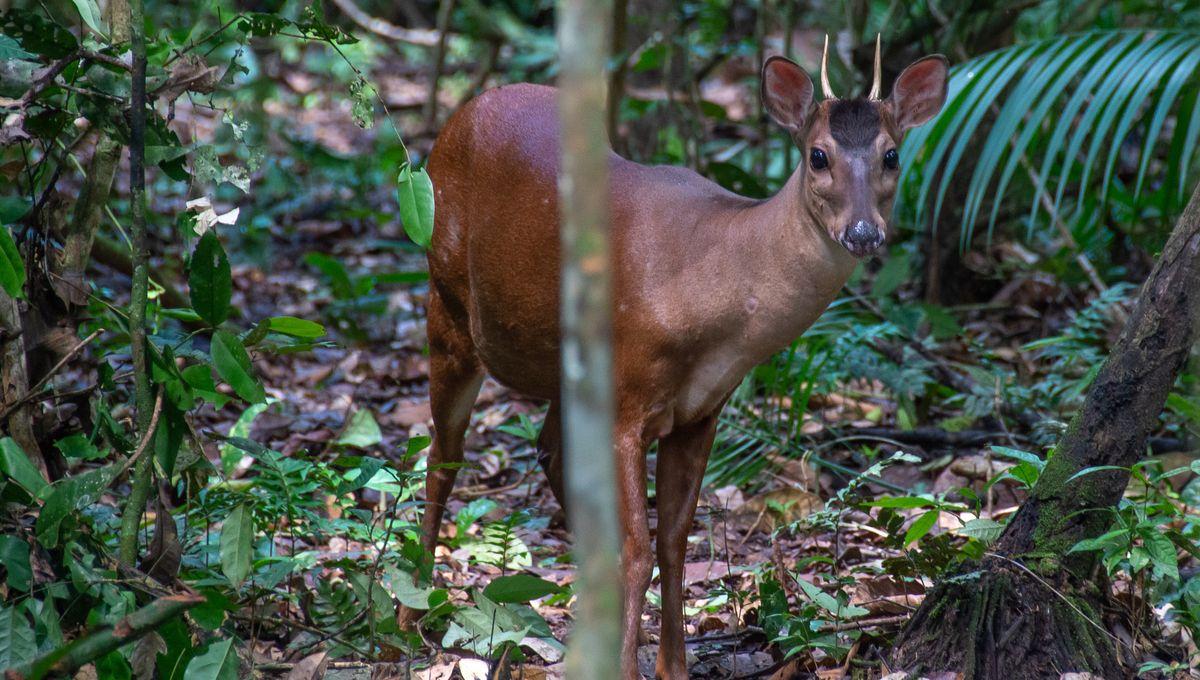Deer Can Learn Commands Like "Come", But The Most Restless Ones In Class Take Longer To Learn

Deer Can Learn Commands Like "Come", But The Most Restless Ones In Class Take Longer To Learn
Training animals in captivity for vital instances like health checks and being able to give them medicines is a necessary part of the job, but it is not without its challenges. While logistics have a part to play, the individual personality of the animal is also a big factor, as researchers in Brazil found when they tried, and succeeded, in teaching deer basic commands.
The rest of this article is behind a paywall. Please sign in or subscribe to access the full content. In Brazil, 12 red brocket deer (Mazama americana) were used in a study looking to evaluate how reactive the deer were in a routine handling procedure by an unfamiliar person. Deer can exhibit high reactivity in response to a stimulus, which reflects their wild adaptations as a prey species. To properly handle red brocket deer in ex-situ conservation settings, physical restraint is discouraged because of the potential for injury to the deer themselves and handlers. Red brocket deer are not a particularly big species, but can grow to 65 centimeters (2 feet) in height and weigh around 30-40 kilograms (66-88 pounds). Instead, techniques like positive reinforcement can be used to train animals to perform voluntary movements that can aid in treatment plans. For example, a giraffe living at a UK zoo became the first to learn how to use an inhaler. To test how well the deer would respond to commands and how reactive they were, the team developed three tests. The first tested the reactivity of the deer with an unfamiliar person alone in their stall. The person entered the stall and stood still where the deer could easily see them. The deer were watched to see if they approached the person. After 12 minutes, the person attempted to stroke the deer on its neck, and the deer were scored on their restlessness. Illustration of the interaction between a red brocket deer and the trainer during the learning process. Image Credit: Gragnanello et al., 2025, PLOS One, CC-BY 4.0 In the second study, the team watched to see if the deer jumped while being transferred from their stalls to a handling box with a length of approximately 10 meters (32 feet). Once inside the handling box, in the final experiment, the person performed a series of moves to see how the deer would react to being touched gently on their hindquarters and backs. There was also a process whereby the team sought to teach the deer certain commands like “snout”, “come”, and “spray”, accompanied by the positive reinforcement treat of pieces of banana to habituate the deer to different processes. The team learnt that the bolder deer were more likely to be more adaptable and learnt commands better. Ariel, Chico, Felipe, and Marquinhos showed positive behaviors and required only seven sessions for habituation to the commands. Three other deer, Kida, Eve, and Coragem, took more than 60 habituation sessions without success and remained in the initial phase of the trial. These three also jumped the most in the moving part of the experiment. The four other deer were reactive to an intermediary degree, but only one, called Guta, mastered the commands out of the group. “Notably, Guta was an extremely aggressive female, yet she excelled at learning. In contrast, the other three deer exhibited more fearful behaviors toward the trainer,” explain the authors. Though fearful, the three others successfully learned some of the commands. Overall, the study revealed that the least reactive deer had a greater potential for learning the commands. By contrast, the more fearful individuals took a longer time to master the commands. The team thinks that by learning each individual's reactivity, training can be tailored to suit an individual's personality, leading to better outcomes. The paper is published in PLOS ONE.


